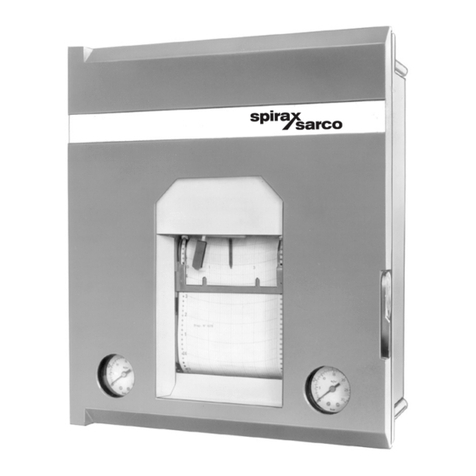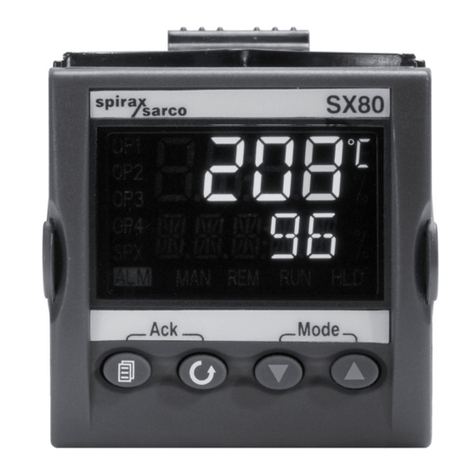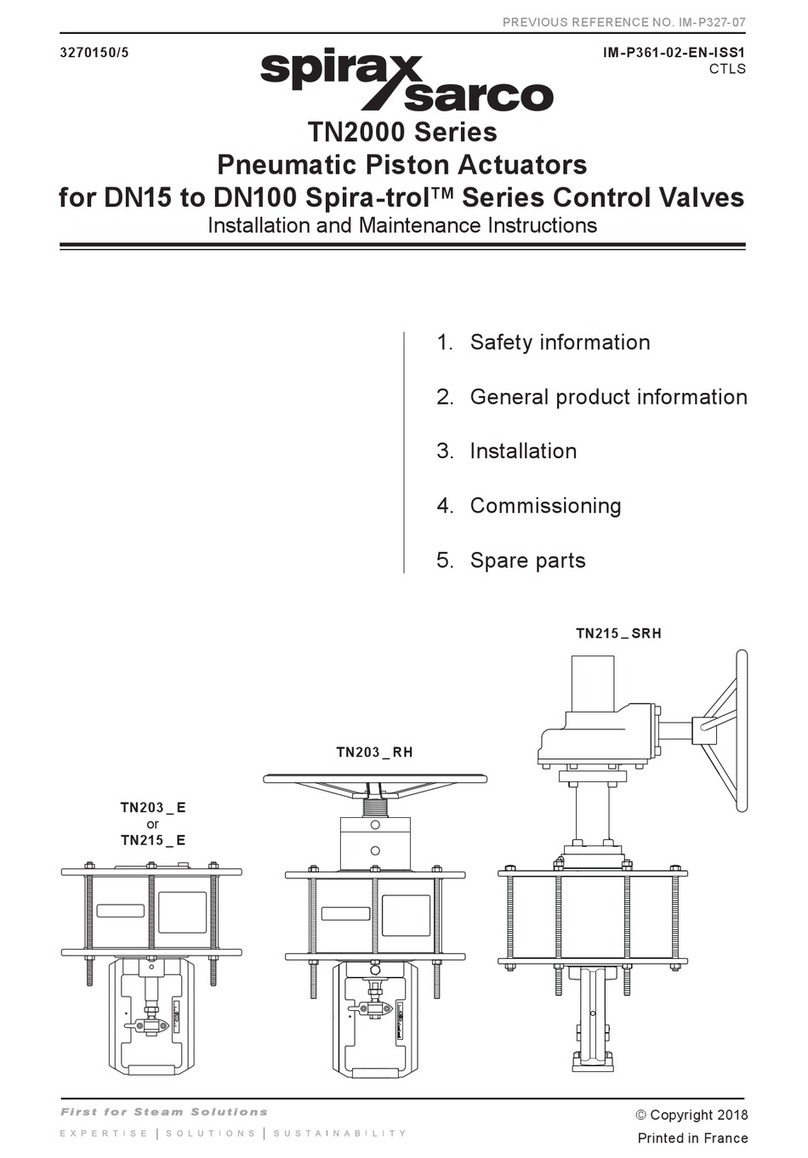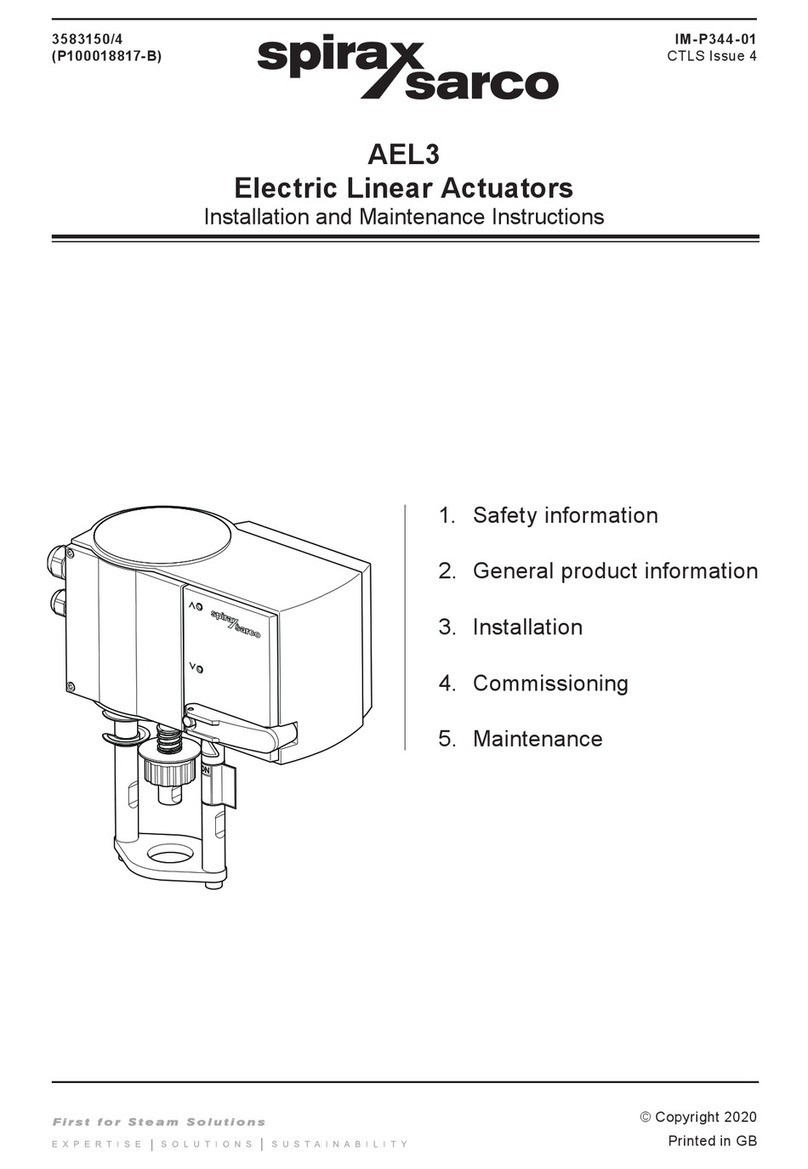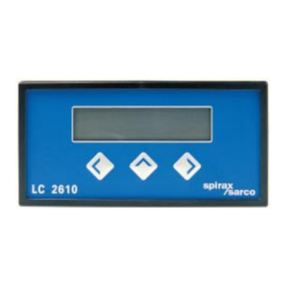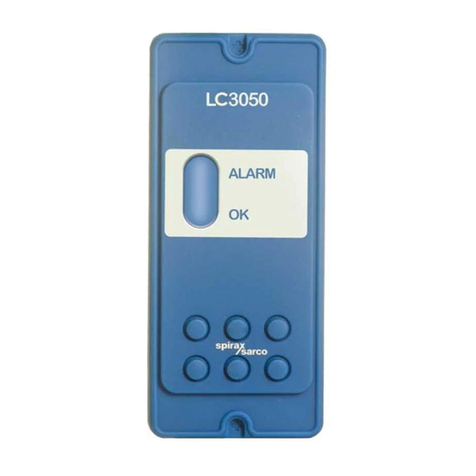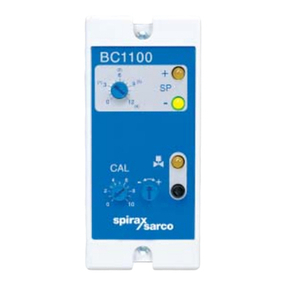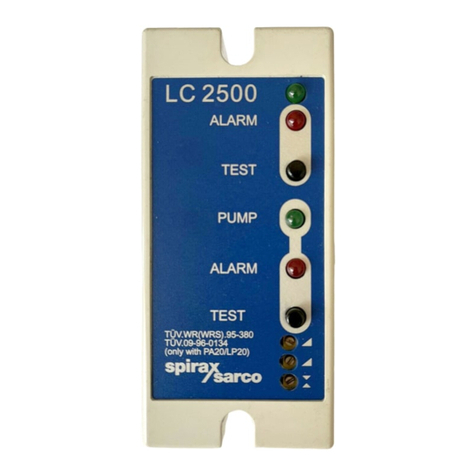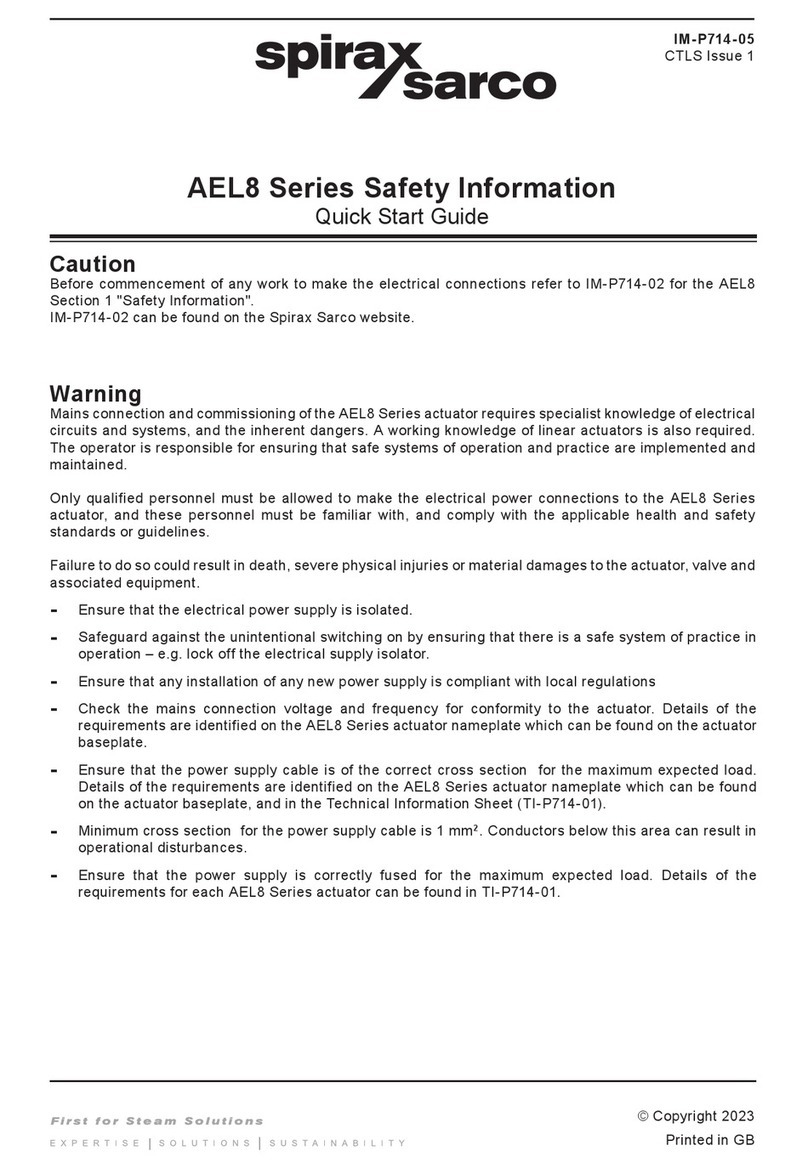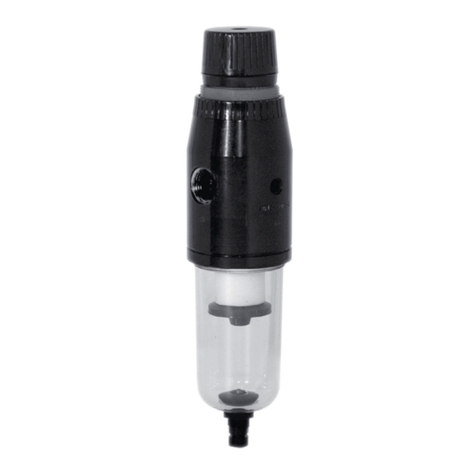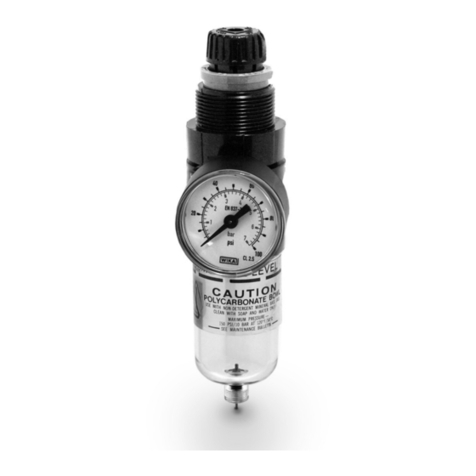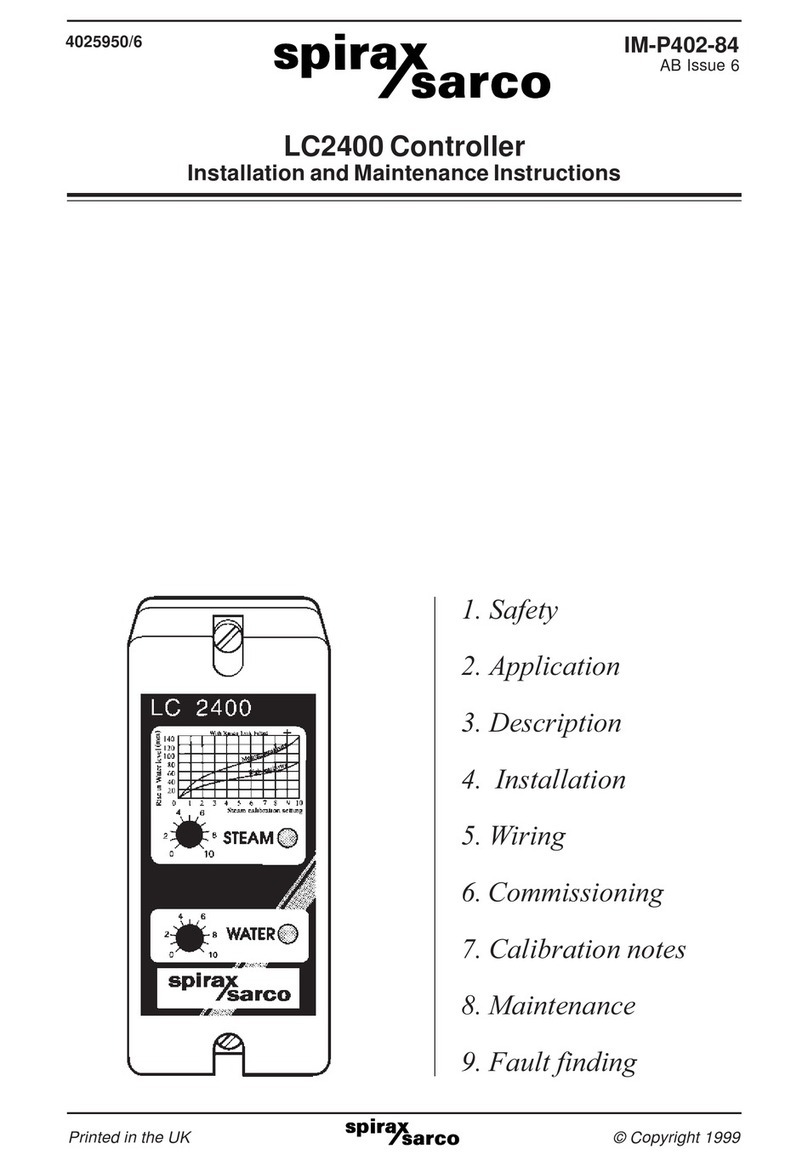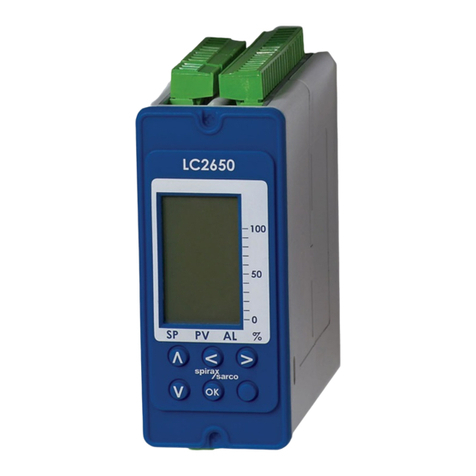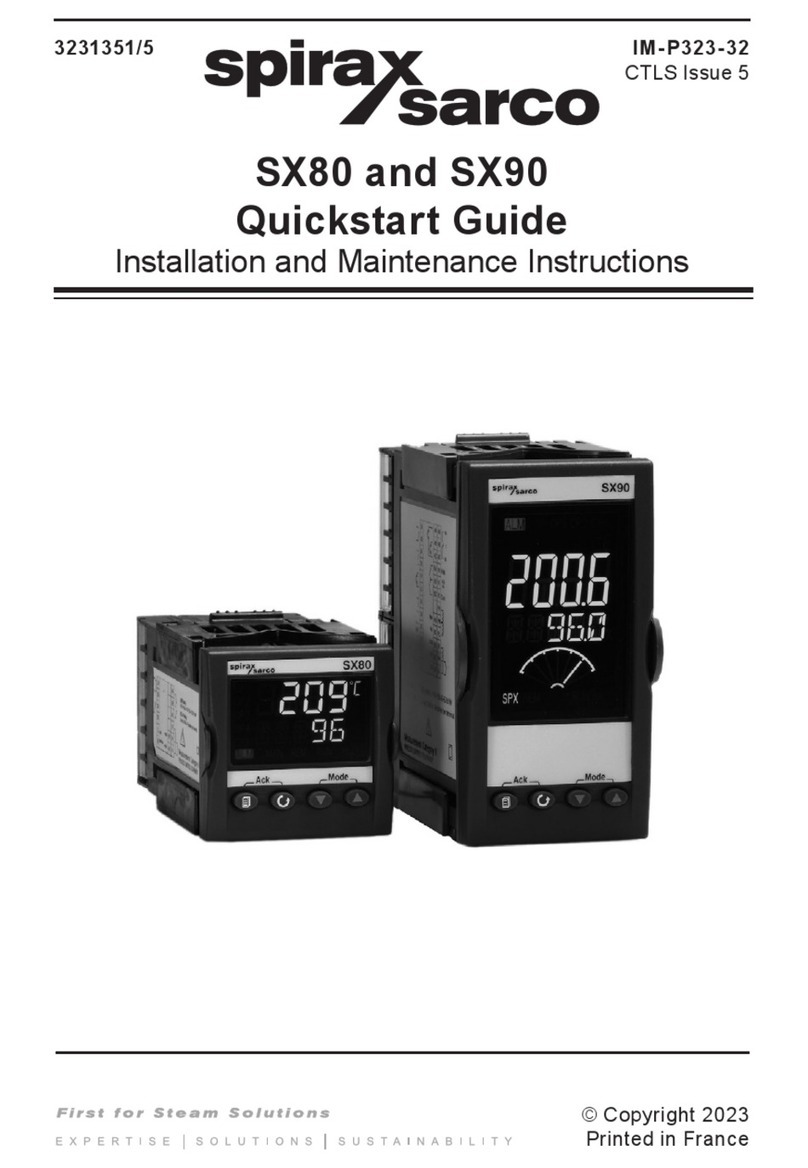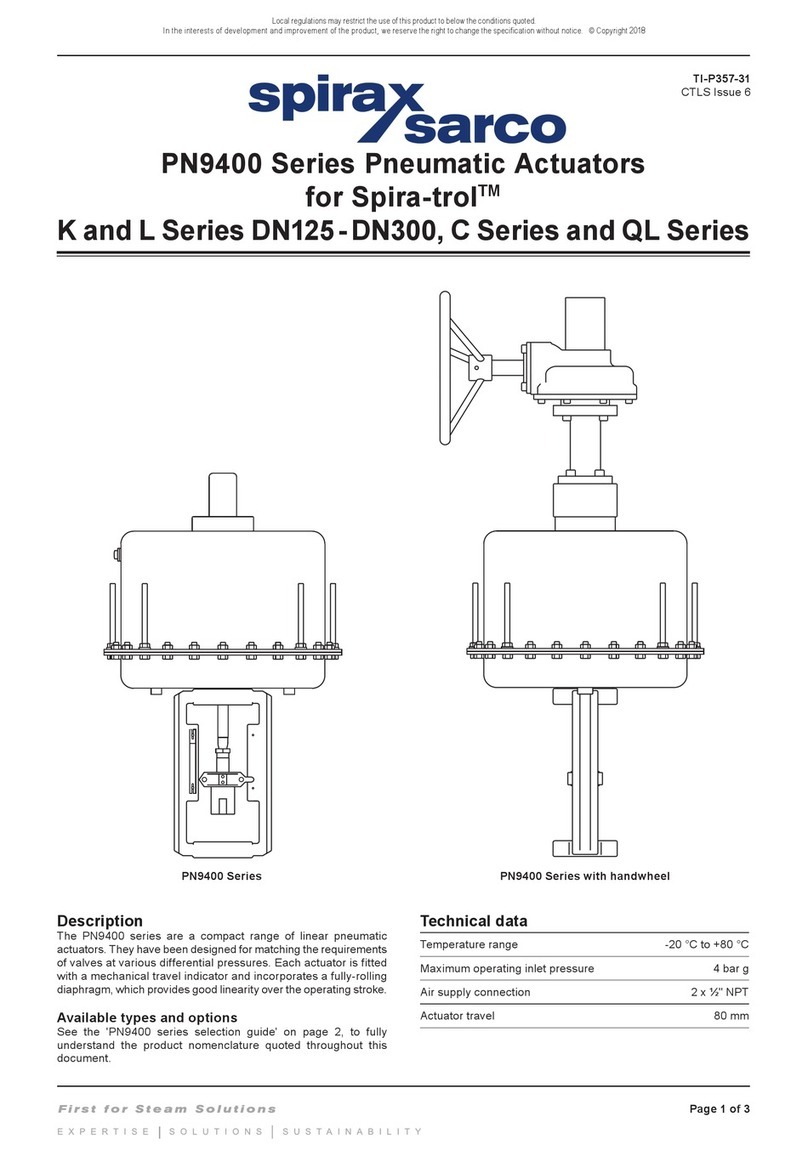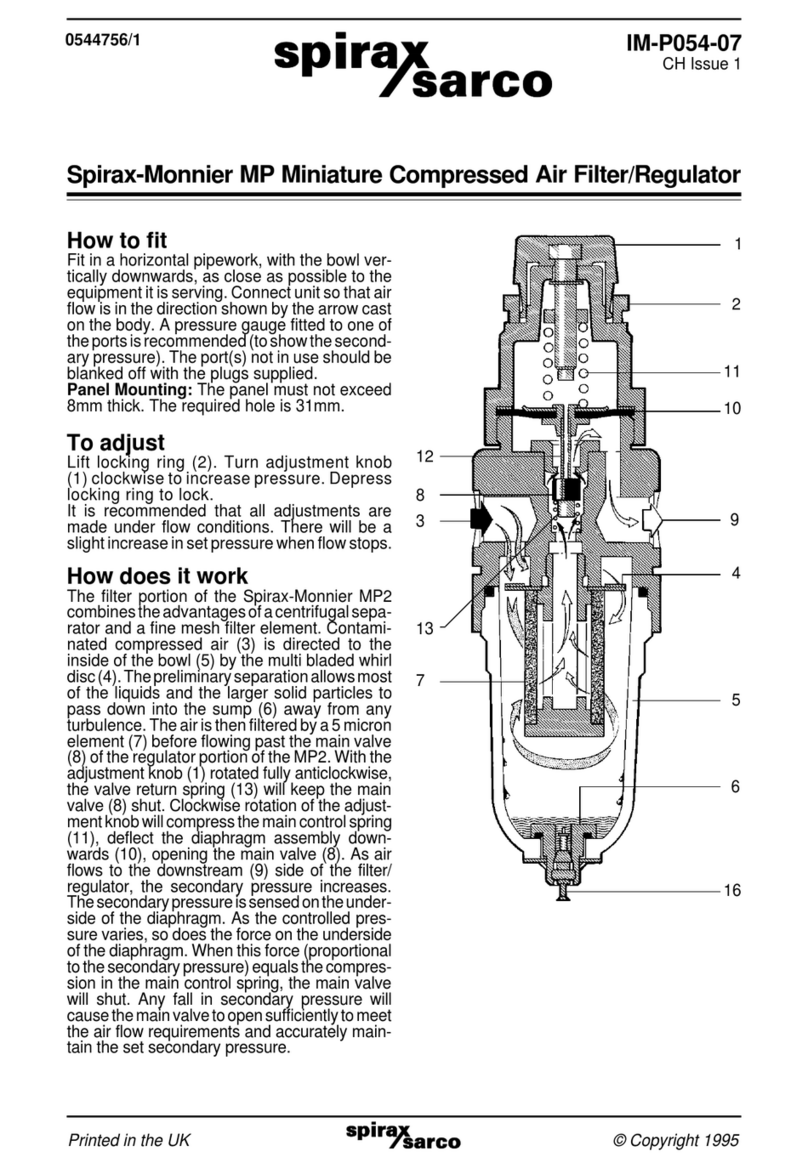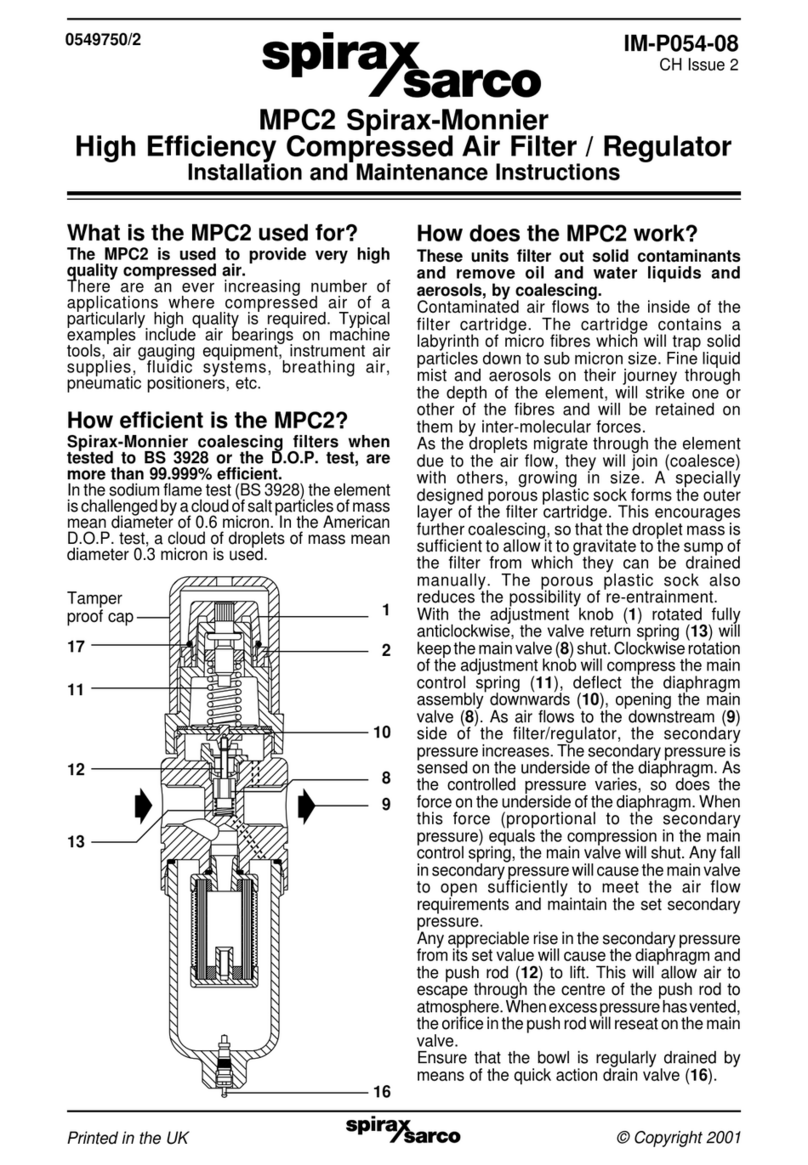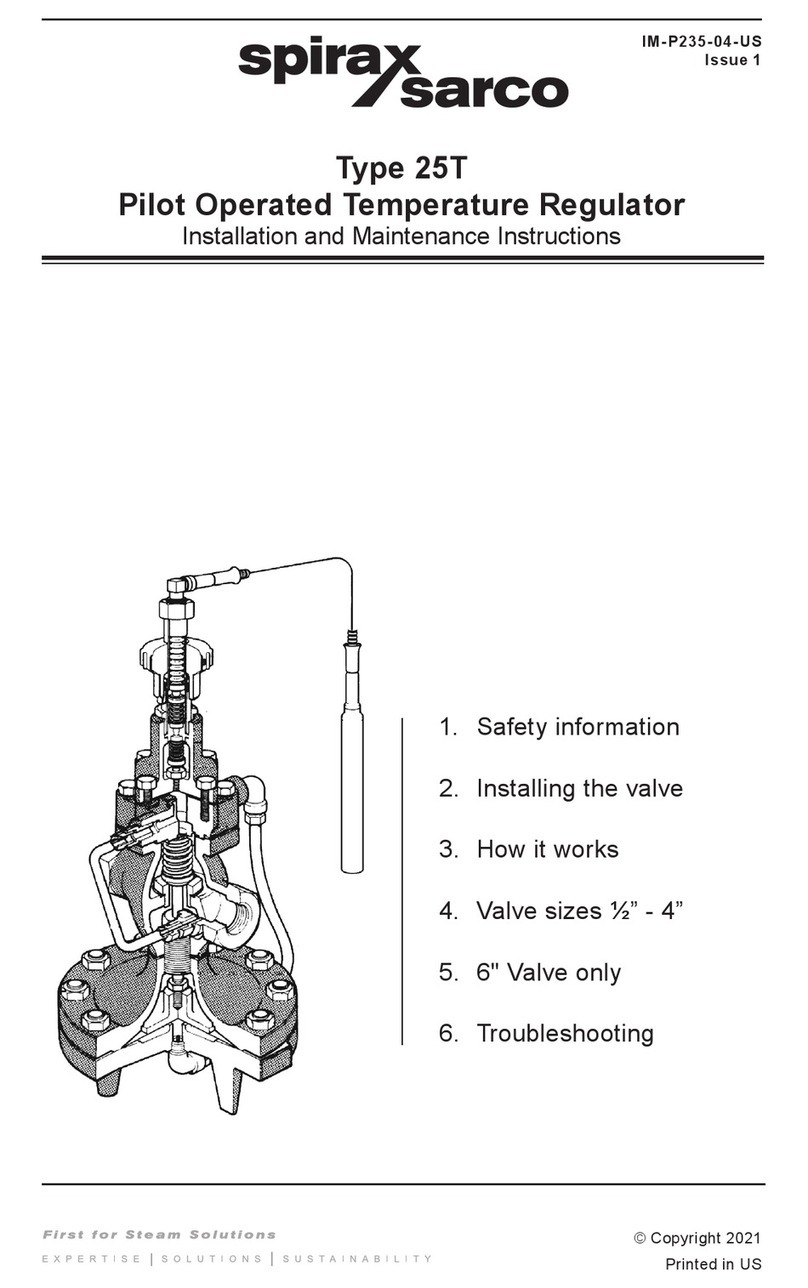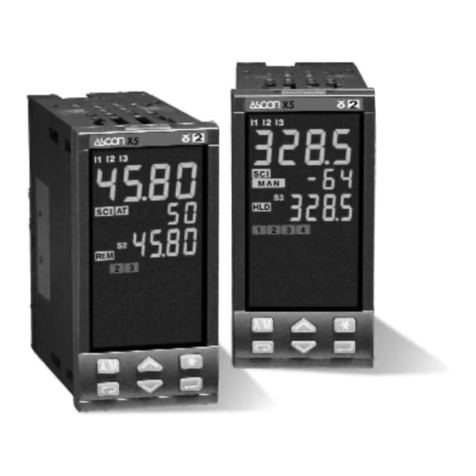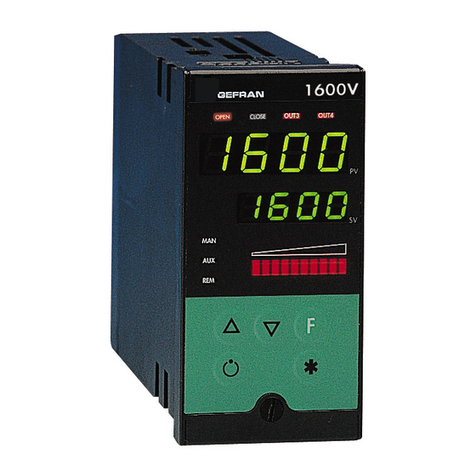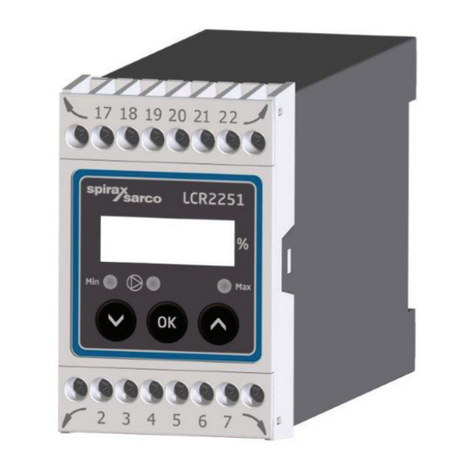
4
Thermometer
An accurate thermometer should be installed in very close
proximity to the temperature regulating bulb.
How It Works
Normal positions before startup are with the main valve
closed and the pilot valve held open by spring force.
Entering steam passes through the pilot valve into the
diaphragm chamber and also out through the control ori-
fice. As flow through the pilot valve exceeds flow through
the orifice, control pressure increases in the diaphragm
chamber and opens the main valve. As the medium being
heated approaches the pre-selected temperature, liquid
in the bulb expands through the capillary tubing into the
bellows and throttles the pilot valve (3E). Control pressure
maintained in the diaphragm chamber positions the main
valve to deliver required steam flow. When heat is not
required, the main valve closes tight to provide dead-end
shutoff. The temperature setting can be changed by turn-
ing the calibrated adjustment dial.
Start-Up
1. First make certain that all stop valves as closed.
2. Adjust the temperature pilot to the temperature
required by turning the red adjustment knob 3C.
Caution: Do not loosen Allen set-screw in the red
temperature knob.
3. Open stop valves in the following order:
a. Open stop valve ahead of steam trap on steam
supply line. This will insure condensate free
steam at the regulator inlet.
b. Open downstream stop valve.
c. Slowly open inlet stop valve.
4. After the system has stabilized itself, check thermom-
eter temperature. Readjustment of the temperature
pilot (red knob 3C) may be necessary. Note: In the
event the temperature indicated on the calibrated dial
does not agree with the thermometer, the temperature
pilot can be recalibrated to match the thermometer as
described on page 5.
5. Important–Retighten all pilot flange connections to
insure steam tight joints.
Maintenance
General Inspection
While a program of planned maintenance is always to be
recommended, the Spirax Sarco 25T temperature regu-
lator will give long and trouble-free service if correctly
selected, installed and kept reasonably free of dirt and
foreign matter. Dirt and foreign matter are most likely to
collect during installation and later trouble can be avoided
by inspecting the installation a few days later. Check the
following:
1. Clean all pipeline strainers (remove screens to clean).
2. Check the main valve seat and protective screen (1D).
3. Inspect and clean orifices (E) and (H).
4. Check all joints for leakage.
Servicing Procedure (Refer to Fig. 3 and 4)
To determine which part of a malfunctioning temperature
regulator requires maintenance, refer to the troubleshoot-
ing chart and follow this servicing procedure to check the
tightness of the seats.
1. With all stop valves closed and the valve cooled
down, remove the copper tubing from connectors (L)
and (N) for 1/2” - 2” valves, being careful not to bend
them.
2. Close the pilot valve (K) by turning the temperature
adjustment (3C) counter-clockwise until the spring is
completely compressed.
3. Stand clear of the tubing connectors and open the
inlet stop valve slightly so that a small amount of
steam reaches the valve inlet and pilot.
4. Open and close the pilot valve a few times by turning
the temperature adjustment and observe the steam
flow from tubing connectors (N) for 1/2” - 2” valves.
When the pilot valve is closed, there should be no
steam flow from the connectors; if there is some steam
flow, it indicates that the pilot valve assembly is faulty
and must be replaced.
5. With the copper tubing removed the main valve head
and seat are held closed and should not pass any
steam. Observe the downstream orifice connector (L).
Steam flow from this connector indicates that the main
valve head and seat are leaking and require servicing.
Inspecting and Replacing Pilot Valve Head
and Seat. (Refer to Figs. 3 and 4)
NOTE: Inspecting and replacing parts, if necessary, can
be done without removing the pilot from the main valve.
However, if more convenient, the entire pilot can be
removed from the main valve by removing the four pilot
flange cap screws.
Exception: To replace the seat in low pressure (5 psi and
below) 2-1/2”, 3”, and 4”valves, the entire pilot must be
removed from the main valve or mounting bracket.
1. Unscrew hexagon nut (K) and remove temperature
adjustment assembly.
2. The pilot valve head assembly (3E), which includes
the springs, Teflon seal, and valve head, can then be
withdrawn and inspected.
3. If it is found after inspection that the head is worn, the
entire assembly should be replaced.
4. The pilot valve seat can be removed for inspection
using a 1/2” hexagon socket wrench.
5. If the seat shows signs of wear, the seat should be
replaced including a new seat gasket.
Valve Sizes 1/2” Thru 4”
Inspecting and Replacing Main Valve Head
and Seat. (Refer to Figs. 3 and 4)
1. Unscrew copper tubing connection at (J) and (N).
2. Remove main valve cover cap screws (1A).
3. Remove main valve cover, strainer screen, and head
spring.
4. Head can then be removed by simply withdrawing
with a pliers or similar tool.
5. Inspection should then be made to determine if scale
or other foreign material prevented tight closure of the
head and seat. Check for body erosion at the seat
threads.
6. If it is necessary to replace the valve seat, this can be
removed from the valve body using a standard hexa-
gon socket. (Valve sizes 1/2” to 2”.) When replac-
ing the valve seat, a new gasket should be used to
insure a tight joint. 2-1/2” valves contain raised lugs
for removal and seal metal-to-metal without a gasket.
Replacement heads and seats should be lapped in.
